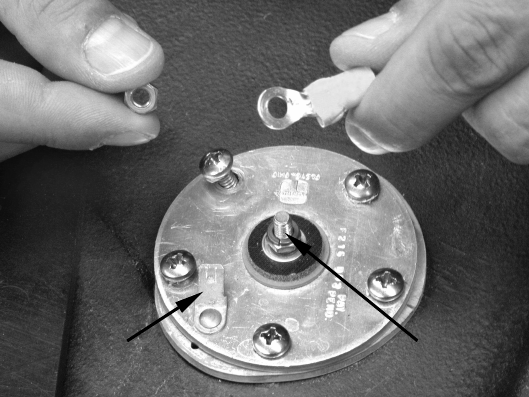
4
Next, attach the positive red lead to the sending unit's positive connector,
usually located in the center of the mounting plate. Connect the negative
black lead to the sending unit's negative connector. To be sure which
connection is which, refer to the mounting instructions that came with the
sending unit.
Connect wire leads to fluid level sending unit. This is a typical sending
unit mounting bracket. The center threaded post is + and the blade is – .
Finally, connect the blue locking collar connector to the NMEA 2000 network.
Route the sensor's cable connector to the T on the network backbone where
you intend to attach it, and plug it in. The sensor is ready to use.
Connecting to a NMEA 2000 Network
A network bus is an installed and operational network cable (backbone)
running the length of your boat, already connected to a power supply and
properly terminated. Such a bus provides network connection nodes at
various locations around your boat.
This is similar to the telephone wiring in a house. If you pick up a phone in
your living room, you can hear someone talking into the phone in the
bedroom.
Network Nodes
A network bus is built of network nodes spread along a backbone. Network
nodes are made by fitting T-shaped connectors into the backbone (using the
sockets on the sides), and attaching a display unit or sensor at the bottom of
the T.
Using our telephone example, the T connectors are similar to telephone
jacks. The backbone is like the phone wiring running through a house.
Negative
connector
Positive
connector










